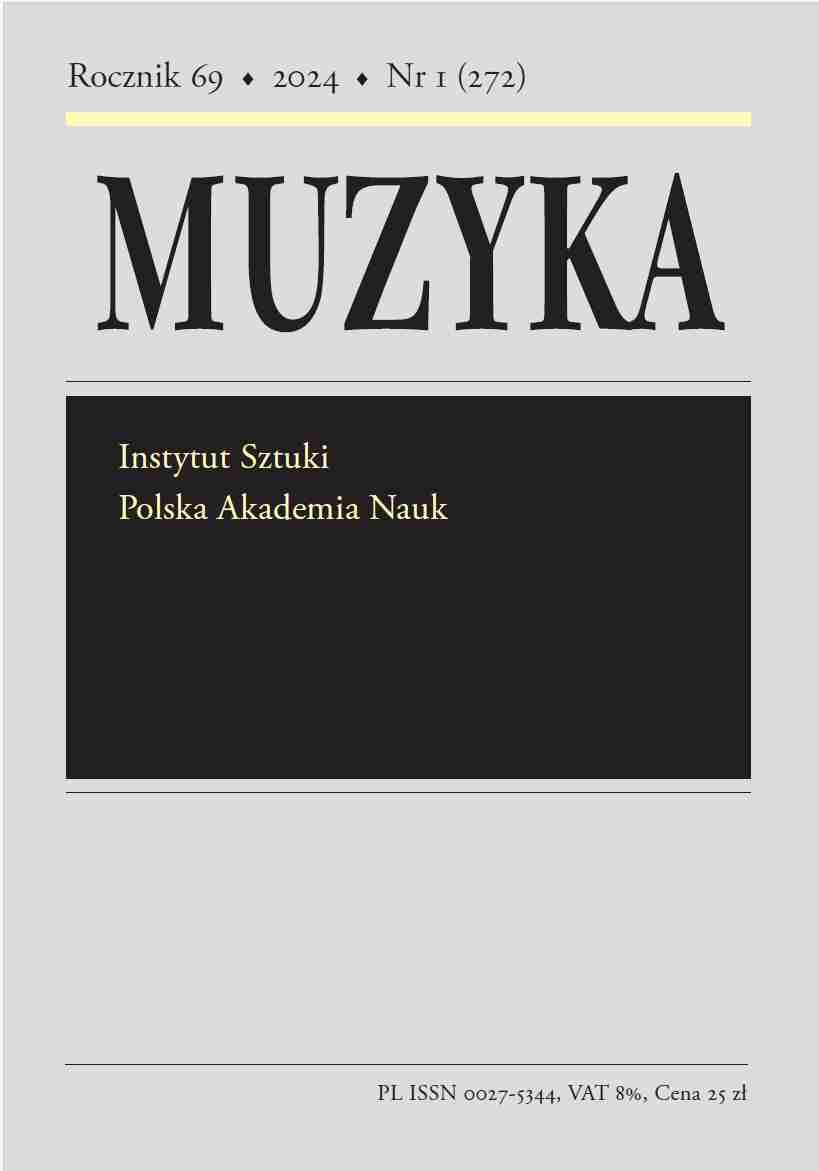W poszukiwaniu nowych funkcji słuchu muzycznego
Alicja Kozłowska-Lewna
Akademia Muzyczna im. Stanisława Moniuszki w Gdańsku (Polska)
https://orcid.org/0000-0002-4541-9943
Abstrakt
Artykuł jest interdyscyplinarnym przeglądem najnowszych badań dotyczących słuchu muzycznego. Autorka omawia rozwój słuchu muzycznego w pierwszej dekadzie życia dziecka, zjawisko amuzji oraz zagadnienia związane ze słuchem absolutnym. Uwypukla związki słuchu muzycznego z niektórymi zdolnościami poznawczymi.
Poziom zdolności muzycznych jest niezwykle wysoki już od momentu narodzin. Niemowlęta rodzą się z potencjałem do odbierania dźwięków różnych kultur, rozpoznają subtelne różnice melodyczne i rytmiczne lepiej niż dorośli. Wrażliwość na bodźce słuchowe zmniejsza się wraz z wiekiem a okres nauki czystej intonacji kończy się około dziewiątego roku życia. Z tego między innymi powodu pierwsza dekada życia dziecka jest niezwykle ważna dla poprawnego kształtowania zdolności słuchowych.
Amuzja na świecie jest zjawiskiem niezwykle rzadkim i dotyczy ok. 2,5-4% populacji. W Polsce natomiast - ze względu na zaniedbania edukacyjne - 27% dziesięcioletnich uczniów klas trzecich stanowią dzieci monotoniczne (A. Weiner).
W literaturze wyróżnia się amuzję wrodzoną i nabytą. Amuzja nabyta pojawia się w wyniku uszkodzenia mózgu. Zdaniem autorki używana w ośrodku kanadyjskim definicja amuzji wrodzonej (I. Peretz: „wrodzona amuzja, powszechnie znana jako głuchota tonalna, odnosi się do muzycznych niepełnosprawności, które nie mogą być wyjaśnione przez wcześniejsze uszkodzenia mózgu, utratę słuchu, wady poznawcze lub brak środowiska stymulacji”) rodzi pewne wątpliwości. Brak sprzyjającego środowiska muzycznego jest pojęciem mało precyzyjnym. Niektórzy badacze (m.in. J. A. Sloboda) sugerują, że główną przyczyną amuzji są zaniedbania edukacyjne. Udowodniono, że amuzji towarzyszą: zaburzenia motoryczno-czuciowe, zaburzenia pamięci, zaburzenia organiczne (mniejsza ilość substancji szarej, mniejsza ilość substancji białej, słabsza sieć połączeń synaptycznych, słabsza sieć połączeń między półkulami, słabiej rozwinięta kora słuchowa).
We współczesnych badaniach nad słuchem absolutnym coraz częściej zwraca się uwagę na związek tej zdolności z plastycznością mózgu oraz towarzyszącymi mu umiejętnościami poznawczymi. Potwierdzono silną korelację słuchu absolutnego z wczesną edukacją muzyczną. Anatomiczne i neuronalne podstawy kształtowania się tej zdolności wykazały, że można ją uznać za „muzyczną manifestację” różnych zdolności poznawczych. U osób słyszących absolutnie zaobserwowano bardziej rozległe sieci neuronowe, podwyższoną łączność niektórych obszarów mózgu, większą ilość materii szarej i białej, lepszą pojemność pamięci.
Zasadnicza hipoteza artykułu sprowadza się do udowodnienia tezy, że muzykalność może być traktowana jako model służący sondowaniu innych aspektów poznawczych, w tym głównie pamięci.
Autorzy
Alicja Kozłowska-LewnaAkademia Muzyczna im. Stanisława Moniuszki w Gdańsku Polska
https://orcid.org/0000-0002-4541-9943
Statystyki
Abstract views: 303PDF downloads: 265
Licencja
Prawa autorskie (c) 2024 Alicja Kozłowska-Lewna

Utwór dostępny jest na licencji Creative Commons Uznanie autorstwa 4.0 Międzynarodowe.
Autor udziela wydawcy niewyłącznej i nieodpłatnej licencji (CC BY 4.0) na wykorzystanie tekstu w „Muzyce”, zachowuje nieograniczone prawa autorskie i zobowiązuje się do podawania miejsca pierwodruku w „Muzyce” przy ponownym wykorzystaniu artykułu (umowa licencyjna do pobrania). Zgłaszając artykuł do publikacji, autor wyraża zgodę na jego udostępnianie na licencji CC BY 4.0.
Artykuły w zeszytach od 2018/1 do 2022/3 publikowane były na licencji CC BY-NC-ND 4.0. W tym okresie autorzy/ki udzielali wydawcy niewyłącznej i nieodpłatnej licencji (CC BY-ND 4.0) na wykorzystanie tekstu w „Muzyce”, zachowywali nieograniczone prawa autorskie, ale zobowiązywali się do podawania miejsca pierwodruku przy ponownym wykorzystaniu artykułu.










